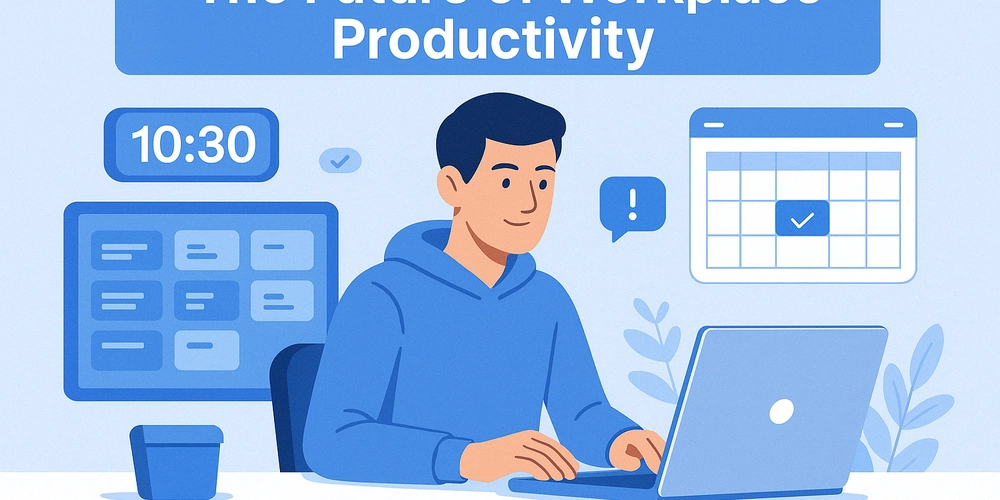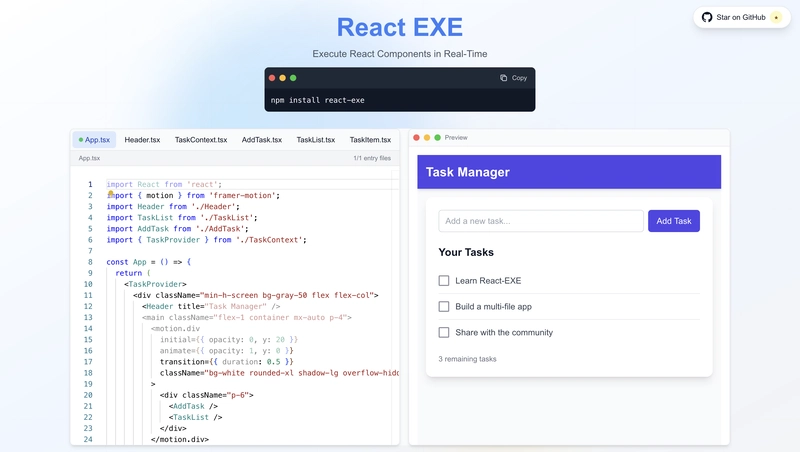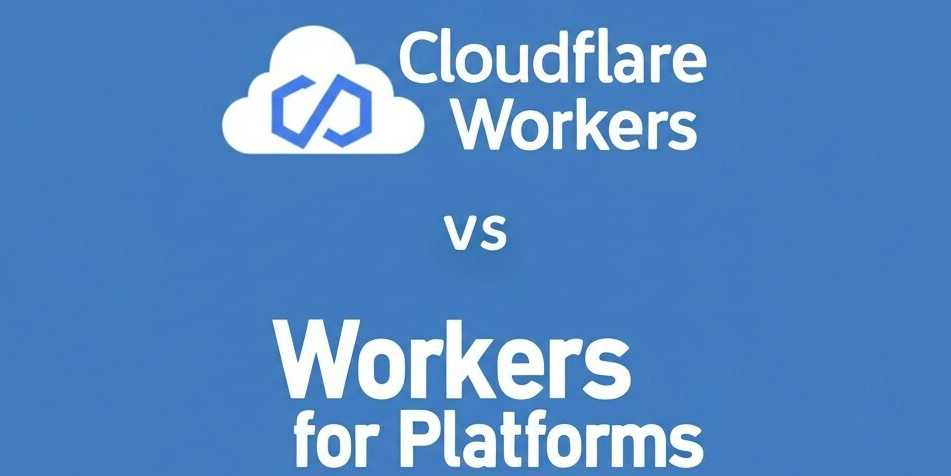The Future of Workplace Productivity - AI and Automation Trends
Introduction – How AI and Automation Are Changing the Way We Work Workplace productivity is undergoing a massive transformation. With AI and automation now embedded in daily workflows, teams are not just working faster they’re working smarter. From intelligent scheduling to real-time documentation, the tools we use are becoming proactive contributors. In this article, we explore the top AI and automation trends reshaping productivity in 2025. 1. AI Assistants Are Becoming Team Members AI tools are no longer just optional helpers, they’re becoming active collaborators in how work gets done. AI summarizes meetings and auto-generates notes Tools like ChatGPT assist with content creation and research AI coding assistants speed up development and debugging These tools help reduce cognitive load and let teams focus on higher-value thinking. 2. Workflow Automation Reduces Manual Overhead Automation platforms like Zapier and Make are enabling teams to stitch together tools and eliminate repetitive tasks. Auto-update tasks when status changes Trigger reminders and alerts based on behavior Automatically assign or close tasks based on project rules How TaskFrame helps: TaskFrame includes built-in automation features that update task states, notify stakeholders, and flag overdue work without requiring a separate automation tool. 3. Personalized Productivity Systems AI is enabling productivity tools to adapt to individual working styles. Smart prioritization based on behavior and workload Context-aware suggestions for next actions Dynamic dashboards that surface what matters most TaskFrame allows teams to customize workflows and task views based on individual and team roles, so everyone works the way they work best. 4. Documentation Becomes Automated and Contextual The days of manually writing and maintaining long documents are fading. Notes and summaries are auto-generated from tasks and discussions AI helps organize and format knowledge dynamically Docs are embedded where work happens, not in separate silos TaskFrame's advantage: TaskFrame generates living documentation through structured properties and visual context. Docs are no longer an afterthought, they evolve with your tasks and wireframes. 5. Real-Time Dashboards Replace Status Meetings Instead of weekly syncs to ask, “Where are we?”, teams rely on live dashboards. Task progress and blockers are visible in real time Stakeholders can track delivery without interrupting teams Teams save time by reducing status meetings and manual updates This shift increases transparency and trust across the organization. 6. Async Collaboration Becomes Default More teams are distributed, and work hours are more flexible. The result: async-first tools are taking the lead. Updates shared via video, comments, or summaries Fewer live meetings, more documented communication Tools that support time-shifted contributions thrive TaskFrame supports async collaboration by connecting tasks, docs, and design into one shared visual space that can be accessed anytime without needing a live call. Conclusion – Productivity Is Evolving, Are You? The future of productivity is intelligent, automated, and deeply integrated into your workflow. Teams that embrace AI and automation will gain clarity, reduce busywork, and ship faster with less friction. If your tools are still slowing you down, it’s time to rethink your workspace. Try TaskFrame and experience a productivity platform designed for how modern teams actually work.

Introduction – How AI and Automation Are Changing the Way We Work
Workplace productivity is undergoing a massive transformation.
With AI and automation now embedded in daily workflows, teams are not just working faster they’re working smarter.
From intelligent scheduling to real-time documentation, the tools we use are becoming proactive contributors. In this article, we explore the top AI and automation trends reshaping productivity in 2025.
1. AI Assistants Are Becoming Team Members
AI tools are no longer just optional helpers, they’re becoming active collaborators in how work gets done.
- AI summarizes meetings and auto-generates notes
- Tools like ChatGPT assist with content creation and research
- AI coding assistants speed up development and debugging
These tools help reduce cognitive load and let teams focus on higher-value thinking.
2. Workflow Automation Reduces Manual Overhead
Automation platforms like Zapier and Make are enabling teams to stitch together tools and eliminate repetitive tasks.
- Auto-update tasks when status changes
- Trigger reminders and alerts based on behavior
- Automatically assign or close tasks based on project rules
How TaskFrame helps:
TaskFrame includes built-in automation features that update task states, notify stakeholders, and flag overdue work without requiring a separate automation tool.
3. Personalized Productivity Systems
AI is enabling productivity tools to adapt to individual working styles.
- Smart prioritization based on behavior and workload
- Context-aware suggestions for next actions
- Dynamic dashboards that surface what matters most
TaskFrame allows teams to customize workflows and task views based on individual and team roles, so everyone works the way they work best.
4. Documentation Becomes Automated and Contextual
The days of manually writing and maintaining long documents are fading.
- Notes and summaries are auto-generated from tasks and discussions
- AI helps organize and format knowledge dynamically
- Docs are embedded where work happens, not in separate silos
TaskFrame's advantage:
TaskFrame generates living documentation through structured properties and visual context. Docs are no longer an afterthought, they evolve with your tasks and wireframes.
5. Real-Time Dashboards Replace Status Meetings
Instead of weekly syncs to ask, “Where are we?”, teams rely on live dashboards.
- Task progress and blockers are visible in real time
- Stakeholders can track delivery without interrupting teams
- Teams save time by reducing status meetings and manual updates
This shift increases transparency and trust across the organization.
6. Async Collaboration Becomes Default
More teams are distributed, and work hours are more flexible.
The result: async-first tools are taking the lead.
- Updates shared via video, comments, or summaries
- Fewer live meetings, more documented communication
- Tools that support time-shifted contributions thrive
TaskFrame supports async collaboration by connecting tasks, docs, and design into one shared visual space that can be accessed anytime without needing a live call.
Conclusion – Productivity Is Evolving, Are You?
The future of productivity is intelligent, automated, and deeply integrated into your workflow.
Teams that embrace AI and automation will gain clarity, reduce busywork, and ship faster with less friction.
If your tools are still slowing you down, it’s time to rethink your workspace.
Try TaskFrame and experience a productivity platform designed for how modern teams actually work.










































































































































































![[The AI Show Episode 144]: ChatGPT’s New Memory, Shopify CEO’s Leaked “AI First” Memo, Google Cloud Next Releases, o3 and o4-mini Coming Soon & Llama 4’s Rocky Launch](https://www.marketingaiinstitute.com/hubfs/ep%20144%20cover.png)


















































































































![[DEALS] The All-in-One Microsoft Office Pro 2019 for Windows: Lifetime License + Windows 11 Pro Bundle (89% off) & Other Deals Up To 98% Off](https://www.javacodegeeks.com/wp-content/uploads/2012/12/jcg-logo.jpg)





































![Is this too much for a modular monolith system? [closed]](https://i.sstatic.net/pYL1nsfg.png)






















































































































_Andreas_Prott_Alamy.jpg?width=1280&auto=webp&quality=80&disable=upscale#)
































































































![What features do you get with Gemini Advanced? [April 2025]](https://i0.wp.com/9to5google.com/wp-content/uploads/sites/4/2024/02/gemini-advanced-cover.jpg?resize=1200%2C628&quality=82&strip=all&ssl=1)













![Apple Shares Official Trailer for 'Long Way Home' Starring Ewan McGregor and Charley Boorman [Video]](https://www.iclarified.com/images/news/97069/97069/97069-640.jpg)
![Apple Watch Series 10 Back On Sale for $299! [Lowest Price Ever]](https://www.iclarified.com/images/news/96657/96657/96657-640.jpg)
![EU Postpones Apple App Store Fines Amid Tariff Negotiations [Report]](https://www.iclarified.com/images/news/97068/97068/97068-640.jpg)
![Apple Slips to Fifth in China's Smartphone Market with 9% Decline [Report]](https://www.iclarified.com/images/news/97065/97065/97065-640.jpg)




































































































































